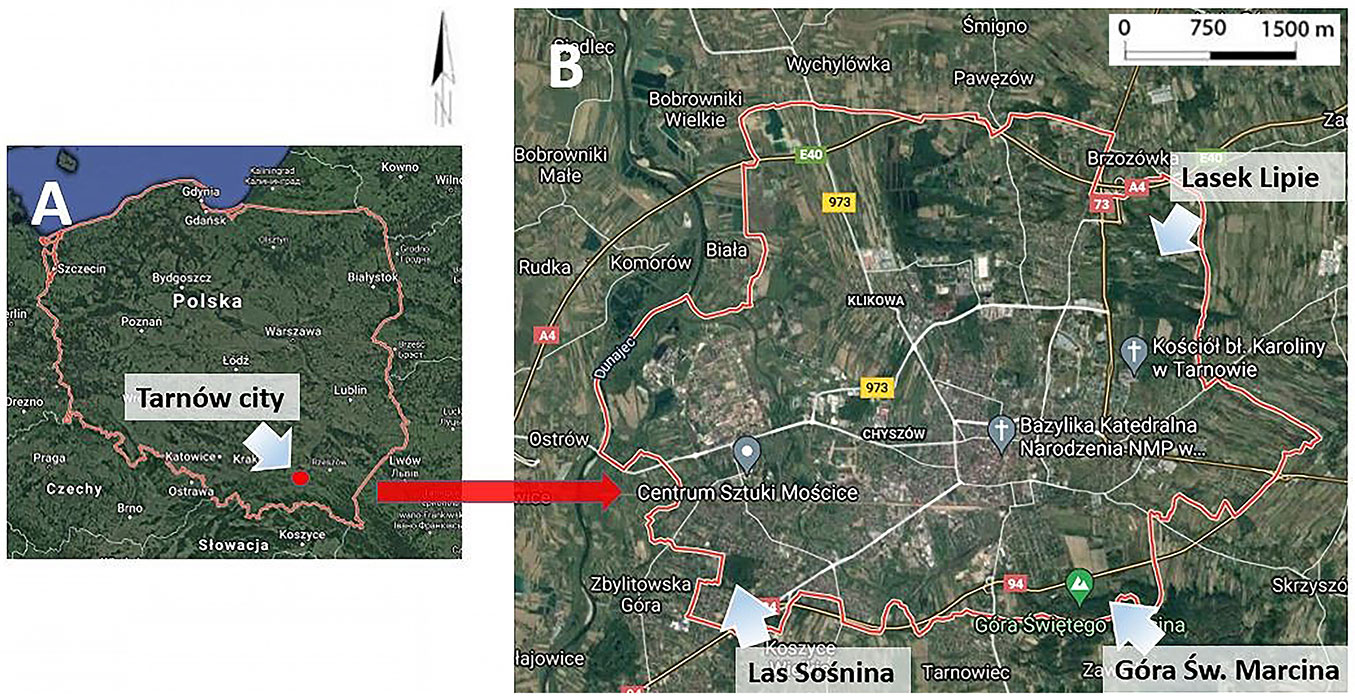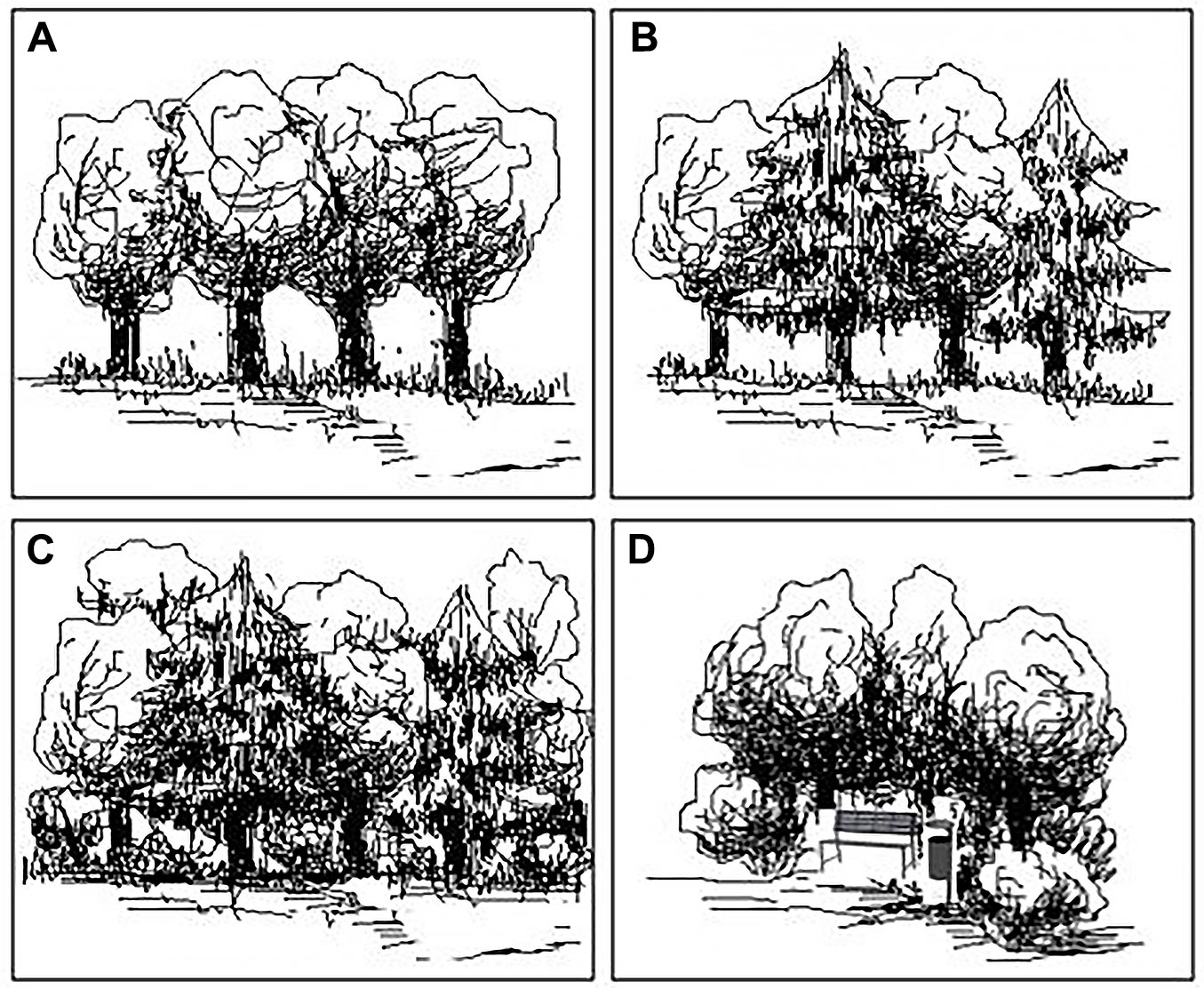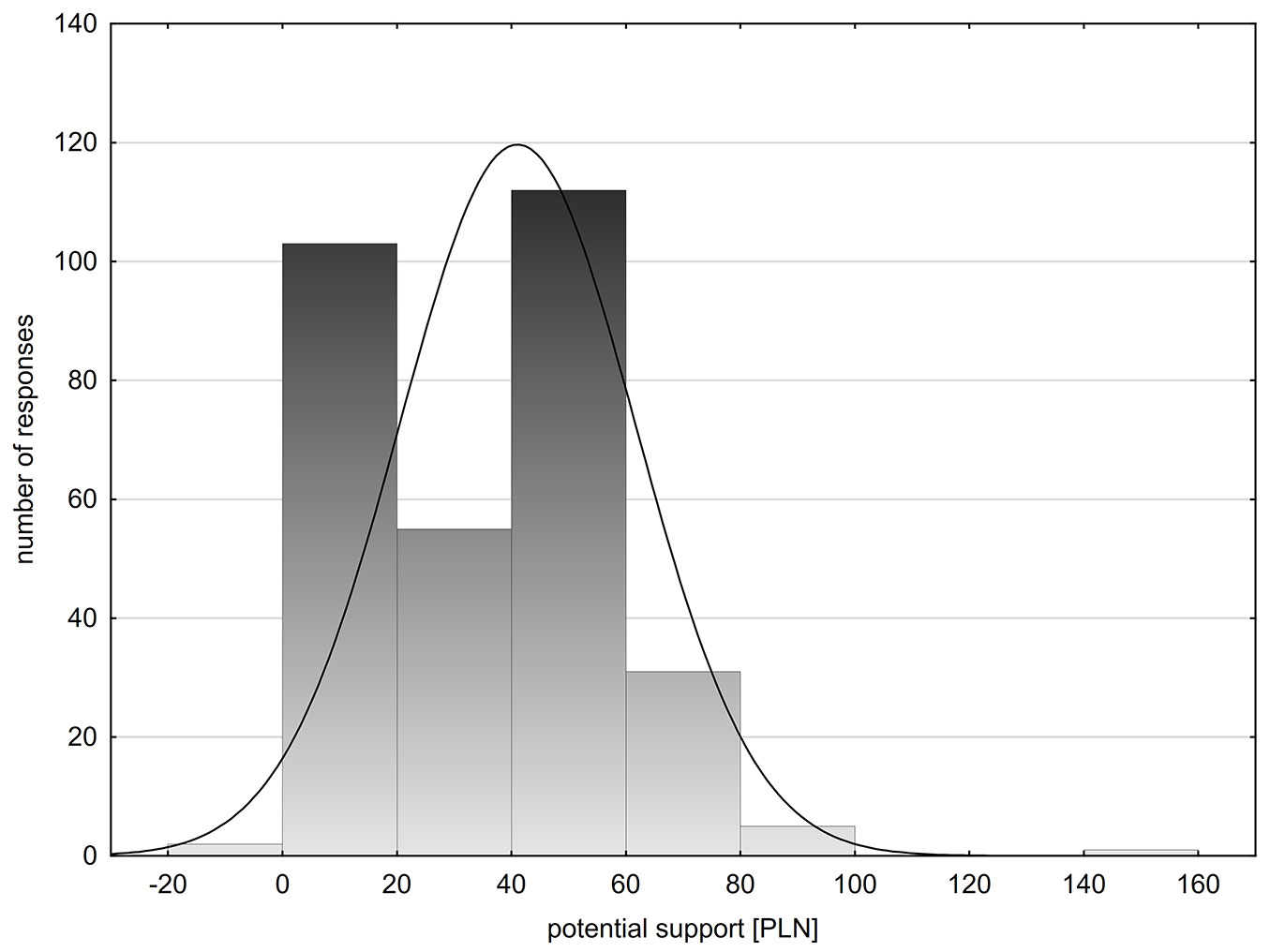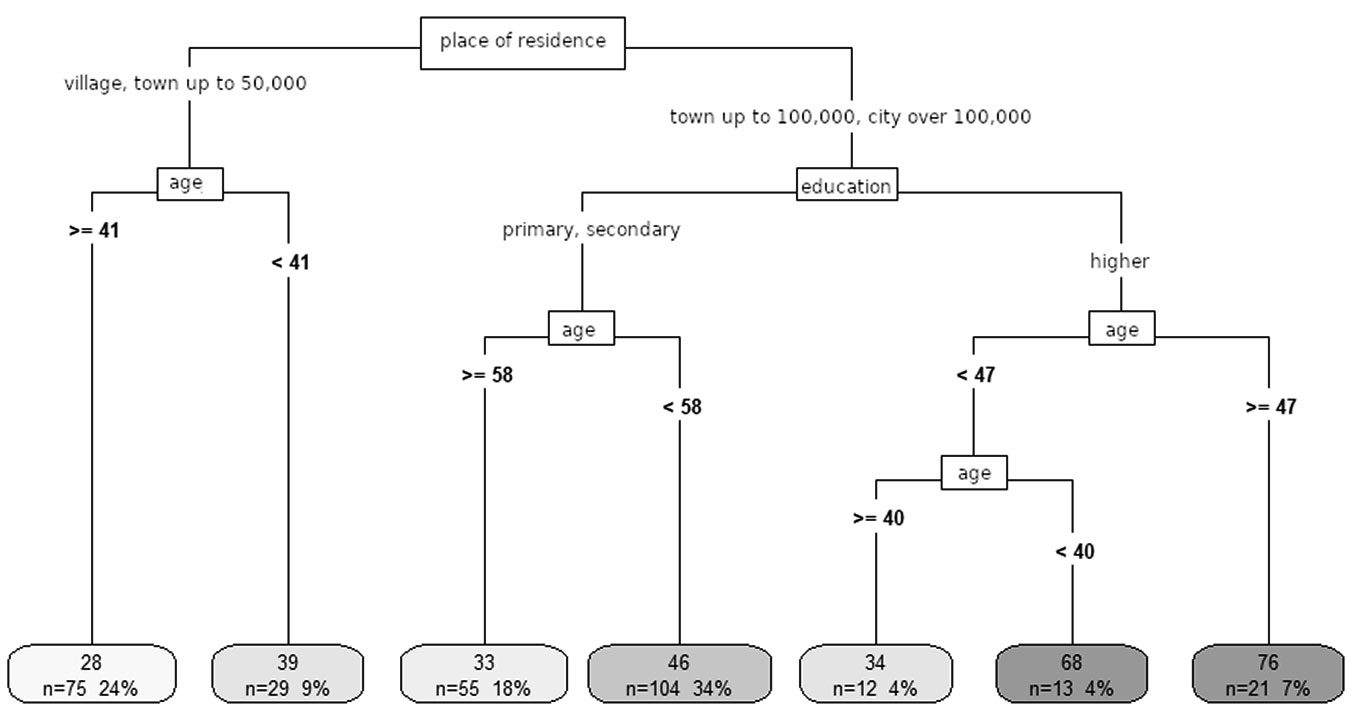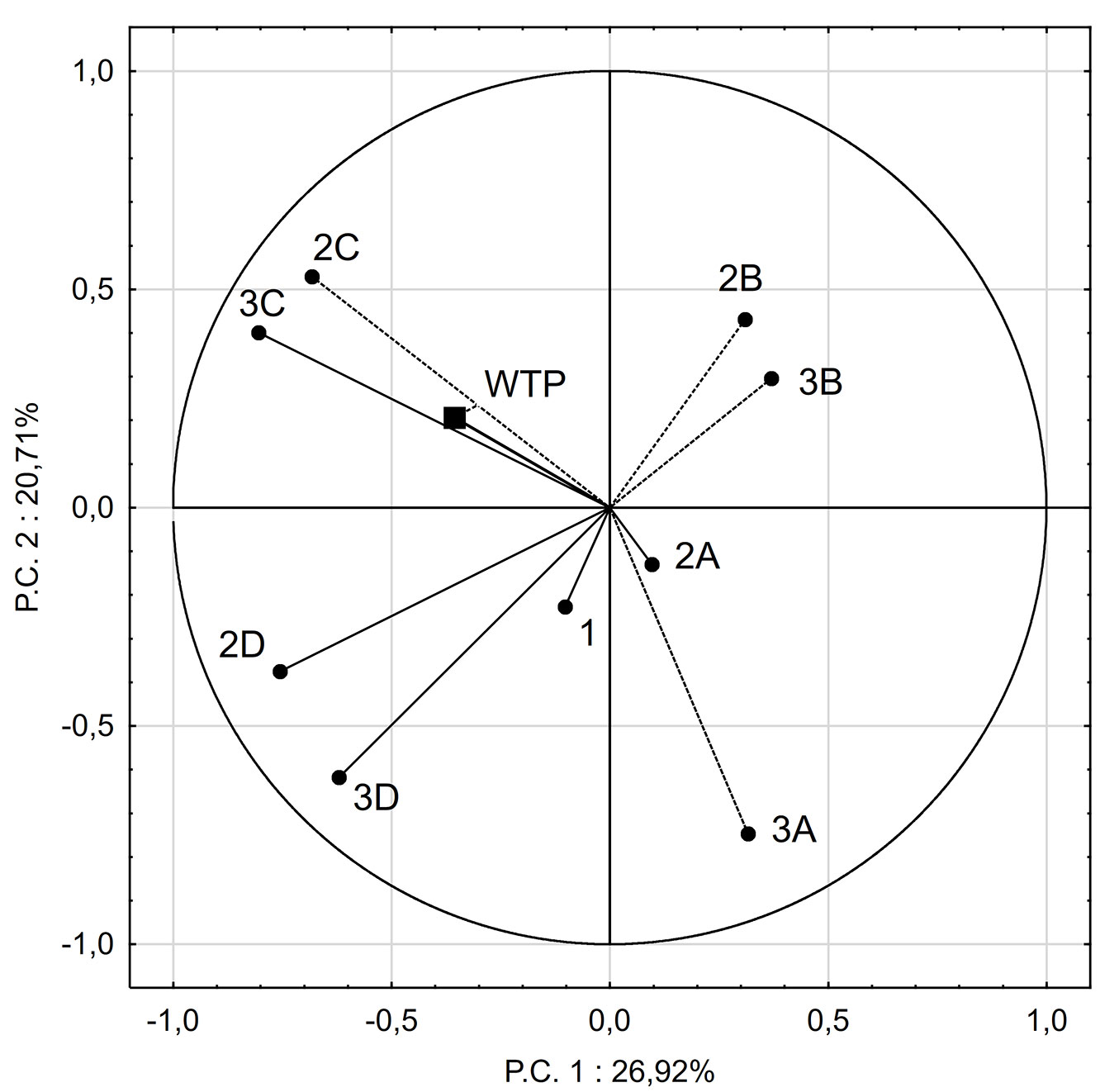
The willingness of inhabitants in medium-sized city and the city’s surroundings settlements to pay for recreation in urban forests in Poland
iForest - Biogeosciences and Forestry, Volume 14, Issue 5, Pages 483-489 (2021)
doi: https://doi.org/10.3832/ifor3758-014
Published: Oct 27, 2021 - Copyright © 2021 SISEF
Research Articles
Abstract
The aim of the study was to determine the willingness-to-pay (WTP) in exchange for recreation, to determine the dependency between the frequency of visits and willingness of forest users to make contributions for urban forests and the appearance of the forest, as well as the sociological characteristics of the respondents. The research was carried out on the example of the medium-sized city of Tarnów, southern Poland. To this aim, a survey was conducted on a group of 309 adult respondents inhabitants of Tarnów city and city’s surroundings settlements. For statistical analysis, the Classification And Regression Trees (CART) method was used to determine the dependency between the declared contributions and the characteristics of respondents, and the Principal Components Analysis for examining the dependency between WTP and the appearance (structure) of the forest. The dependency between the frequency of visits to urban forests and the demographics was analysed by chi-square test and one-way analysis of variance. The results showed that 97% of respondents are willing to make payments for urban forests, the amount of which differed depending on their place of residence, education, and age. Also, the vast majority of respondents make their WTP contributions dependent on the appearance of the forest. This applies in particular to a multi-stratum, multi-species forest with the undergrowth and recreational infrastructure. In addition, the frequency of visits to the area is affected by gender and place of residence. The obtained results are especially important for the recreation function of urban forests including willingness of inhabitants in Tarnów city and surroundings settlements.
Keywords
Recreation, Urban Forests, Willingness To Pay, Visual Aspect of Forest, Preferences of Tourist, Tarnów
Introduction
Green areas, including urban forests, are basic elements in the ecological structure in the city. Nowadays, urban forests are more appreciated by the inhabitants because of diversity of vegetation ([18]), health benefits such as reduction of air pollution, or potential for recreation in metropolitan areas ([34]). Preferences for recreation in forest areas are the subject of many research studies ([21], [23], [28], [3], [8]) focusing on time spent on recreation, e.g., collecting the products of forest undergrowth ([37]) and enjoying the benefits of leisure in forests ([30]). Urban forests are forest areas under the management of city or town authorities, usually located within or near the territorial range of urban agglomerations. In Poland, their area covers 615.206 ha, which includes 598.340 ha under the management of the State Forests National Forest Holding and 16.866 ha as other forms of ownership ([43]). Urban forests managed by the State Forests account for 8.7% of the total forest area in Poland. In compliance with the Forest Act of 1991 ([36]), forests within the range of city or town impact are considered protected. This concerns forest areas within the administrative borders of cities and towns and up to 10 km from the borders of cities and towns with over 50.000 inhabitants. Due to their location, urban forests are very often a place of public recreation ([23], [10], [44]). Their attractiveness also results from the presence of recreational values, location, as well as diversified and well-maintained recreational infrastructure ([11], [48]). Another, and often the most important factor, is the appearance of the forest ([13]) and the richness of its species ([16]). Urban forests are the subject of studies in the light of the valorisation of forest landscape ([17], [1]) and problems with achieving the main forest management objectives ([18], [2]). One of the most frequently used methods to determine the economic value of recreational forest areas is the Contingent Valuation Method, CVM ([47]). It considers the non-market character of the tourist and the recreational function of forests. The CVM method consists in asking potential users of a public good about their Willingness To Pay (WTP) for it. Where consumers are willing to pay for a good or service more than it actually costs, they benefit from it ([32]), including recreation function of forests. It is assumed that the measure of the value of a good is the highest amount the consumer is able to spend on it. The measure of this value is WTP ([47]) for purchase or access to some goods. The tool for disclosing the WTP values is a survey questionnaire. For this purpose, a substitute or hypothetical market is created for a given good or service ([38]). The surveys are based on interviews in which respondents provide information on how much a given good or service is valued by them ([32]). It is assumed that individual consumers are able to answer questions that reveal their preference for public goods and services ([32]) which include tourist and recreational benefits of forest areas. Research on the WTP for recreation in forest areas has been conducted on many occasions ([38], [19], [49], [42], [10], [29]). There are also many research studies carried out in the area of urban forests ([39], [7]) as well as forests with different ownership forms ([26], [12]). In this paper, we present the willingness of inhabitants in medium-sized city and the city’s surroundings settlements to pay for recreation in urban forests in Poland. Cities of medium-sized are predominant in Poland and all over Europe ([15]).
The dependency between the frequency of visits and willingness to make payments for Tarnów Urban Forests (TUF) and the appearance of the forest as well as the sociological characteristics of the respondents were also examined. To this end, the following research hypotheses have been defined: (i) users of urban forests are WTP a small contribution in exchange for access to TUF; (ii) the amount of declared payments is influenced by the characteristics of respondents such as gender, age, education, and place of residence; (iii) the amount of declared payments is related to the appearance of the forest; (iv) the frequency of visits to TUF depends on gender, age, education, and place of residence of respondents.
Materials and methods
Research area
Tarnów is a city located in the southern part of Poland (Fig. 1) We chose this city, because it represents a medium-sized city with 108,000 inhabitants in Poland. Medium-sized cities are dominated in our country from the whole cities. The forest area of the city of Tarnów is 285 ha, of which 125 ha are managed by the State Forests National Forest Holding, 68 ha are municipal forests, and 87 ha are owned by privates. The forestation rate of the city of Tarnów is 3.9% ([43]). There are various forms of green areas in the city, including urban forests. The largest complexes of urban forests accessible to the population are located in the northern and north-eastern parts of the city of Tarnów (Fig. 1). Tarnów Urban Forests include: Lipie Forest (21.81 ha), the Forest on St. Martin’s Mountain (38.56 ha), and Soslina Forest (21.25 ha).
Fig. 1 - (A) Location city of Tarnów in Poland, and (B) location of the urban forests in Tarnów (white arrows).
Survey
The survey was conducted in the period from May to September 2020 on a group of 312 adult respondents, who were inhabitants of Tarnów city and the surrounding settlements. The questionnaires for voluntary inhabitants were available in the municipal offices. Due to incorrectly completed questionnaires, 3 of them were rejected, while the remaining 309 were analysed. The average time to complete the survey was about 10 minutes. When collecting the data, the distributed survey technique was used, which has the advantage of high return rate. The survey questionnaire included questions aimed to examine the sociological structure of the respondents (the demographics): age, gender, place of residence, education, and income. The respondents answered a question about the frequency of visits to TUF area (question 1). Then they were presented with 4 schemes of forest appearance (Fig. 2), showing the structure (morphology) from the simplest to the most complex one: (A) single-stratum, single-species forest without shrub layer with poor undergrowth; (B) single-stratum, multi-species forest without shrub layer with rich undergrowth; (C) multi-stratum, multi-species forest with shrub layer and rich undergrowth; (D) multi-stratum, multi-species forest with shrub layer and rich undergrowth as well as recreational infrastructure. On their basis, the respondents determined the frequency of visits to TUF, depending on the appearance of the forest (question 2), and indicated which forest they would choose as resting place depending on its appearance (question 3). Frequency of access to TUF was recorded by choosing among the following options: daily; once a week; once a month; several times a month; several times a year; once a year. The next questions concerned the definition of the WTP for TUF (question 4). Respondents were presented with a hypothetical situation where voluntary contributions would be needed to finance TUF’s activities. The open question format was used for this purpose. If the answer was negative, the respondents were asked to indicate the reasons for their refusal. The last question was aimed to indicate the dependency between the amount of declared contributions (WTP) for TUF and the appearance of the forest (question 5).
Fig. 2 - Scheme of the different forest structures (appearance) of Tarnów Urban Forests (TUF) included in the questionnaire.
In questions 2, 3 and 5, the respondents had the following answer options: definitely yes; rather yes; it is hard to say; rather no; definitely no.
The question about possible payment was worded a bit differently. We did not ask for approval (or rejection) of predetermined fee. Instead, we asked for the value at which respondents evaluate an ecosystem service. The choice of this method resulted from a smaller number of questionnaires and better adaptation to cultural context (people are used to financing ecosystem services through taxes rather than by direct payments). Additionally, a main goal of our research was the recognition of possible dependencies between forest structure and attractiveness, not a precise estimate of a forest value.
Statistical analysis
The willingness to make payments in return for access to forests is set out in question 4. The distribution of declared payments for TUF has been analysed. Then the dependency between the declared payments (WTP) and the characteristics of respondents such as age, gender, place of residence and education was investigated. The Classification And Regression Trees (CART) method was used for this purpose. Due to the fact that the dependent variable is a continuous variable, a regression type tree analysis was applied. Independent variables, on the other hand, were: age (continuous); place of residence and education (ranking); and gender (categorical/binary). The dependency between the declared amount of payments (WTP) and the structure of the forest was assessed using the Principial Components Analysis (PCA). A set of ranking variables was created for the analysis on the basis of questions 1, 2 and 3. For questions 2 and 3, the preferences for each of the forest schemes (appearance) were different variables. The obtained main components were correlated with the answers to question 4. In addition, the dependency between the frequency of visits to TUF and the gender, education, and place of residence of respondents was analysed. Since the variables were of a categorical or ranking type, they were compiled in the form of contingency tables and the relevance of the dependency was examined using the χ2 test. The dependency between the frequency of visits and the age of respondents was examined by means of a one-factor analysis of variance. As a result, our variable describing the willingness to pay was a simple continuous variable (but not normal), not a binary or series a binary variables. Therefore, logit models cannot be used in our case. The statistics used does answer the same questions as the logit models (dependency between willingness to pay and respondent traits).
Results
Nearly all respondents (97%) declared potential willingness to support TUF with the amount from 0 to 150 PLN, on average 41.07 PLN (median 40 PLN, standard deviation 20.604 - Fig. 3, Tab. 1). The total declared amount was PLN 12.690. The remaining 3% of the respondents indicated in their justification that forests should be fully financed from the State Treasury budget.
Tab. 1 - Basic statistics of WTP values. (N): number of respondents.
| Parameter | Value |
|---|---|
| N | 309 |
| Mean | 41.07 |
| Median | 40 |
| Min | 0 |
| Max | 150 |
| Standard deviation | 20.604 |
The dependency between the declared contribution and the questions included in the questionnaire demographics was examined using the CART method. The analysis considered gender, age, place of residence and education of respondents. The analysis showed that the main criterion differentiating the WTP contributions for TUF maintenance is the place of residence of the respondents (Fig. 4). Village inhabitants are willing to pay less than tourists from localities with over 50,000 and over 100,000 inhabitants. Among the inhabitants of towns and cities (over 50,000 and over 100,000 inhabitants), education is the key factor. Persons with higher education declared their WTP higher contributions. In the last stage of the dependency analysis, there are differences in the WTP due to age. Older persons declare their WTP a higher contribution. At no stage of the analysis does gender appear as a differentiating criterion.
Fig. 4 - The dependency between the declared WTP value and social characteristics of respondents by CART analysis. In nodes: dividing variable; on branches: values of the dividing variable; in leaves: top - mean WTP, bottom - number (n) and share of respondents.
The results of the question concerning the amount of the hypothetical contribution for TUF depending on the appearance of the forest indicate that most respondents would rather (answer: “rather yes”) take into account the appearance of the forest in the situation of TUF financing: A = 61%; B = 63%; C = 72%; and D = 61%. In the case of schemes A and B, the answer “hard to say” stands out (A = 30%; B = 34%), as well as “definitely yes” for the remaining schemes: C = 25%; D = 33%. The other response options did not exceed 3% (Fig. S1 in Supplementary material).
As a result of the PCA analysis, a basic gradient was determined, corresponding to the preference for more complex forests with recreational infrastructure elements (schemes C and D) or simpler ones (schemes A and B). The amount of the declared contribution (WTP) is consistent with this gradient. The higher the respondents’ preference for resting in multi-stratum, multi-species forests with rich undergrowth, the greater their WTP contribution to TUF (Fig. 5). As a result of the analysis, there was a very high level of agreement in the answers to the question of choosing a particular forest (A, B, C or D) for rest and the frequency of visits depending on its appearance, especially in the case of more complex forests (C and D).
Fig. 5 - The dependency between the declared WTP value and the appearance of the forest - PCA analysis for variables. Questions: (1) How often do you visit the Urban Forests of the city of Tarnów? (2) Would the frequency of visits change depending on the appearance of the forest? (3) Which forest presented in the scheme would you prefer to visit?
When examining the respondents’ preferences for choosing TUF as a place of rest depending on the appearance of the forest, it can be seen that they most often responded that it would “rather not” be their place of rest (A = 70%; B = 54%). The fewest persons indicated the option “definitely not”/A (9%) and “rather yes”/B (6%). None of the respondents chose the answers “definitely yes” and “rather yes”. The highest number of respondents evaluating schemes C and D indicated the answer “rather yes” (C = 67%; D = 71%). Only 3% of the respondents indicated answers “it is difficult to say”/C, “rather not”/D and “definitely not”/D (Fig. S2 in Supplementary material). All respondents stayed at TUF area for one day. Taking into account the frequency of visits, almost half (42%) of the respondents indicated that they visit TUF once a week, and 25% of respondents once a month. The smallest group (5%) are persons resting in TUF area every day (Fig. S3 in Supplementary material). When considering the frequency of visits against the appearance of the forest, it can be seen that in the case of the largest group of respondents, the appearance of the forest did not affect the frequency of visits to TUF (schemes A and B). The most frequently indicated answers were: “it is difficult to say” (A = 63%; B = 64%; C = 46%; D = 34%) and “rather yes” (A = 25%; B = 26%; C = 45%; D = 57%). The other response options did not exceed 15% of the total (Fig. S4 in Supplementary material). As a result of the statistical analysis carried out with the PCA method, no correlation was found between the frequency of visits to TUF and preferences in terms of forest appearance differentiation (Tab. S1 in Supplementary material). The results of the statistical analysis of the frequency of visits to TUF indicate a significant differentiation by gender (p < 0.001) and place of residence of respondents (p < 0.001). Differentiation by education (p = 0.08) and age (p = 0.12) proved statistically insignificant. In terms of gender of the respondents, we recorded that women clearly visited TUF more often than men. A noticeably larger group of women visit the forests daily and once a week, while men tend to visit once a year (Fig. S5 in Supplementary material). The inhabitants of the city visit TUF much more often. In this group, the majority of respondents declared that they visited the forest every few days, once a week and even every day. Among the village inhabitants, most of the respondents declared visits once a year or once a month (Fig. S6 in Supplementary material).
Discussion
Nowadays, there is a growing public interest in recreation in the forests as a result of their increased role in performing many social and protective functions and due to the fact that the society has enriched and is able to devote more time off work to leisure and hobbies. In the light of recent research, it can be seen that short trips to the forest areas are preferred ([46], [40], [23]). This is also confirmed by the research conducted on TUF. All respondents rested in the area for one day. On the other hand, Hammit & Patterson ([21]) point out that although tourists spend more and more time in the forest areas, the length of their rest is reduced. This is confirmed by the preferences of respondents in the Mazovian Landscape Park ([23]). It should be borne in mind that forest areas are not always the most popular destinations with tourists. This is confirmed by a study carried out in Ireland in 2010, where respondents selected coastal areas and the coastline (5.4 points each) more frequently than forests (deciduous forests 4.80 and mixed forests 4.36 score on a 6-score scale - [22]).
The benefits achieved by tourists from recreation is a measure of the tourist value of a given site. The research carried out identified a WTP voluntary contributions to TUF. Our results shows that respondents are willing to make payments to TUF and the vast majority (97%) declared their WTP hypothetical contributions for access to TUF. This proportion is very high in comparison with that reported by Plotkowski ([35]), where 78% of the respondents on the territory of the Bialowieza Forest expressed such willingness. Bateman ([6]) noted that 76% of the respondents declared their WTP contributions for the maintenance of recreational urban parks near British cities. On the other hand, on the territory of Finnish Joensuu urban forests such proportion was also high (from 62% to 84% of respondents - [45]). Other studies in Poland have shown that WTP reached lower values, e.g., 46% in the “Nad Tanwia” nature reserve ([29]), and from 37% to 60% (depending on the applied question format) in the “Gostyninsko-Wloclawskie Forests” Promotional Complex ([20]).
The attractiveness of forest areas for recreation results from their universal accessibility for all users, regardless of social characteristics, interests or professional standing. Forests in Poland are open to the public, with the exceptions indicated in Chapter 5 of the Forest Act ([36]) and access to their area is free. However, the amount of declared contributions (WTP) for recreation or protection of areas attractive for tourists depends on many social characteristics of the respondents. In TUF research, they primarily included their place of residence, education, and age. These dependencies do not always exist, e.g., age and education were not related to the declared WTP amounts in American studies ([27]). In the research in the Wielkopolski National Park, the amounts of the declared WTP, apart from the age of respondents, was influenced by the financial support for ecological projects and membership in ecological organisations ([49]). Tyrväinen & Väänänen ([45]) noted that the amount of contributions also depended on other factors, such as the season. This is confirmed by investigations carried out in Finland in winter. Higher WTP values in winter surveys are due to higher tourist activity at this time of year. Interestingly, different results from Finnish studies are presented by Barrio & Loureiro ([4]) indicating that the willingness to pay for recreation in the Joensuu urban forests was higher in summer. Due to the low response rate of respondents resting at TUF, we did not analyse the dependency between the WTP and the respondents’ income. Nevertheless, literature studies indicate that such dependency exists. This is evidenced by significant differences in WTP amounts depending on the changing socio-economic characteristics of respondents in the studies reported by Bartczak ([5]) and Golos ([20]). A danish research by Nielsen et al. ([33]) shows that the higher the income or education the respondents had, the higher the WTP amount they declared, with women more likely to indicate higher values than men.
In this study, there was no dependency between WTP amount and gender. On the other hand, Tyrväinen & Väänänen ([45]) reported that the gender and level of education of respondents did not affect the average value of WTP. Our results shows that the vast majority of respondents condition their WTP contribution on the appearance (structure) of the forest. This applies in particular to a multi-stratum, multi-species forest with the undergrowth (C) and containing recreational and tourist infrastructure. As in study by Sklodowski & Golos ([42]), forest appearance is more important for persons with a better financial standing. The frequency of visits to forest areas depends on many social characteristics of tourists. The results of this study indicate that the frequency of visits to the TUF area is affected by gender and place of residence, as previously reported in Lithuania ([31]).
The social preferences for recreation in forest areas with regard to the appearance (structure) of the forest change over time and vary from country to country. This has been confirmed by studies in the UK, Scandinavia, Central Europe, Italy, and the Iberian Peninsula. For example, the inhabitants of the Apennine mountain communities prefer mixed stands ([13]). On the other hand, Barrio & Loureiro ([4]) showed that tourists were more likely to visit deciduous and older forests than coniferous forests. Further, Dhakal et al. ([14]) indicated that tourists would be more likely to rest in the suburban Whakarewarewa forests in the Rotorua area of New Zealand if their species richness were to increase, whereas Sklodowski et al. ([41]) indicated that the tourist attractiveness of forests was impacted by the appearance and biodiversity of forests. Our results indicate that tourists prefer to rest in multi-species, multi-stratum forests, with shrub layer and rich undergrowth.
Urban forests within the range of general population penetration, are subject to recreational management ([9]). Sustainable and multi-functional forest management is applied in these areas, according to national and European legislation. The determination of technical infrastructure and tourism needs was included in the course of drawing up the review map of recreational development of the forest inspectorate ([25]). Tourists staying in the area of Tarnów city forests are most willing to rest in the forests developed for recreation. This is also confirmed by Vander Stoep & Duniavy ([46]). A different view is presented by Kikulski ([24]), who indicate that tourists prefer to rest in forests without recreational facilities. Interestingly, Kikulski ([24]) stressed that the group of tourists who prefer to rest in the forests with elements of recreational development listed rubbish bins, seats and toilets among the most needed facilities, which indicates that they need rest in a clean forest environment. Decisions on the location of such facilities should take into account not only the preferences of tourists, but also the specific characteristics of the area.
Conclusions
The results of this study are very important for shaping urban forests in terms of recreation. The preferences of respondents, residents of a medium-sized Polish city, together with respondents from neighboring smaller localities, were investigated. The obtained results confirmed the formulated starting hypotheses. Further research aimed at obtaining appropriate economic indications related to the management of urban forests in terms of the needs of the society will be developed in the next future.
The vast majority of the respondents declared their WTP hypothetical contributions for access to TUF. The amount of declared contributions for recreation or protection of areas attractive for tourists depends on many social characteristics of the respondents. In the case of Tarnów urban forests, these were the respondents’ place of residence, their education and age. Persons with higher education declared their WTP higher contributions, which may depend on their higher wages and/or greater awareness and knowledge of the importance of urban forests. The vast majority of respondents make their WTP contributions dependent on the appearance of the forest, which is important due to aesthetic and visual values of these areas. The frequency of use of urban forests for recreational purposes depends on respondents’ gender and the place of residence. The vast majority of the respondents living in the city believe that financial support could be important in special situations for the protection and management of urban forests.
Acknowledgments
The authors would like to acknowledge the valuable comments made by their reviewers. This research received no external funding.
References
CrossRef | Gscholar
Gscholar
Gscholar
Gscholar
Gscholar
CrossRef | Gscholar
Gscholar
Gscholar
Gscholar
Authors’ Info
Authors’ Affiliation
Department of Forest Management Planning, Dendrometry and Forest Economics, Institute of Forest Science, Warsaw University of Live Sciences - SGGW, 159 Nowoursynowska St., 02-776 Warsaw (Poland)
Institute of Horticultural Sciences, Department of Environmental Protection and Dendrology, Warsaw University of Life Sciences - SGGW, Nowoursynowska St., 166 02-787 Warszawa (Poland)
Department of Biometry, Institute of Agriculture, Warsaw University of Live Sciences - SGGW, 159 Nowoursynowska St., 02-776 Warsaw (Poland)
Corresponding author
Paper Info
Citation
Mandziuk A, Fornal-Pieniak B, Ollik M (2021). The willingness of inhabitants in medium-sized city and the city’s surroundings settlements to pay for recreation in urban forests in Poland. iForest 14: 483-489. - doi: 10.3832/ifor3758-014
Academic Editor
Raffaele Lafortezza
Paper history
Received: Jan 20, 2021
Accepted: Aug 26, 2021
First online: Oct 27, 2021
Publication Date: Oct 31, 2021
Publication Time: 2.07 months
Copyright Information
© SISEF - The Italian Society of Silviculture and Forest Ecology 2021
Open Access
This article is distributed under the terms of the Creative Commons Attribution-Non Commercial 4.0 International (https://creativecommons.org/licenses/by-nc/4.0/), which permits unrestricted use, distribution, and reproduction in any medium, provided you give appropriate credit to the original author(s) and the source, provide a link to the Creative Commons license, and indicate if changes were made.
Web Metrics
Breakdown by View Type
Article Usage
Total Article Views: 31649
(from publication date up to now)
Breakdown by View Type
HTML Page Views: 26850
Abstract Page Views: 2141
PDF Downloads: 2107
Citation/Reference Downloads: 0
XML Downloads: 551
Web Metrics
Days since publication: 1517
Overall contacts: 31649
Avg. contacts per week: 146.04
Article Citations
Article citations are based on data periodically collected from the Clarivate Web of Science web site
(last update: Mar 2025)
Total number of cites (since 2021): 5
Average cites per year: 1.00
Publication Metrics
by Dimensions ©
Articles citing this article
List of the papers citing this article based on CrossRef Cited-by.
Related Contents
iForest Similar Articles
Research Articles
How do urban dwellers react to potential landscape changes in recreation areas? A case study with particular focus on the introduction of dendromass in the Hamburg Metropolitan Region
vol. 7, pp. 423-433 (online: 19 May 2014)
Research Articles
Evaluation of urban forest landscape health: a case study of the Nanguo Peach Garden, China
vol. 13, pp. 175-184 (online: 02 May 2020)
Research Articles
The concept of green infrastructure and urban landscape planning: a challenge for urban forestry planning in Belgrade, Serbia
vol. 11, pp. 491-498 (online: 18 July 2018)
Research Articles
Into the wild? Preferences of frequent mountain and forest recreationists for accessibility and mobility
vol. 18, pp. 128-137 (online: 24 May 2025)
Review Papers
Green Infrastructure as a tool to support spatial planning in European urban regions
vol. 6, pp. 102-108 (online: 05 March 2013)
Technical Reports
Assessment of allergenic potential in urban forests: a case study of the Royal Park of Portici in Southern Italy
vol. 13, pp. 376-381 (online: 25 August 2020)
Research Articles
Microclimate regulating functions of urban forests in Changchun City (north-east China) and their associations with different factors
vol. 11, pp. 140-147 (online: 07 February 2018)
Research Articles
Communicating spatial planning decisions at the landscape and farm level with landscape visualization
vol. 7, pp. 434-442 (online: 19 May 2014)
Research Articles
Green oriented urban development for urban ecosystem services provision in a medium sized city in southern Italy
vol. 7, pp. 385-395 (online: 19 May 2014)
Research Articles
Evaluation of urban forest spatial distribution characteristics in Guangdong - Hong Kong - Macao Greater Bay Area
vol. 16, pp. 136-143 (online: 16 May 2023)
iForest Database Search
Search By Author
Search By Keyword
Google Scholar Search
Citing Articles
Search By Author
Search By Keywords
PubMed Search
Search By Author
Search By Keyword

